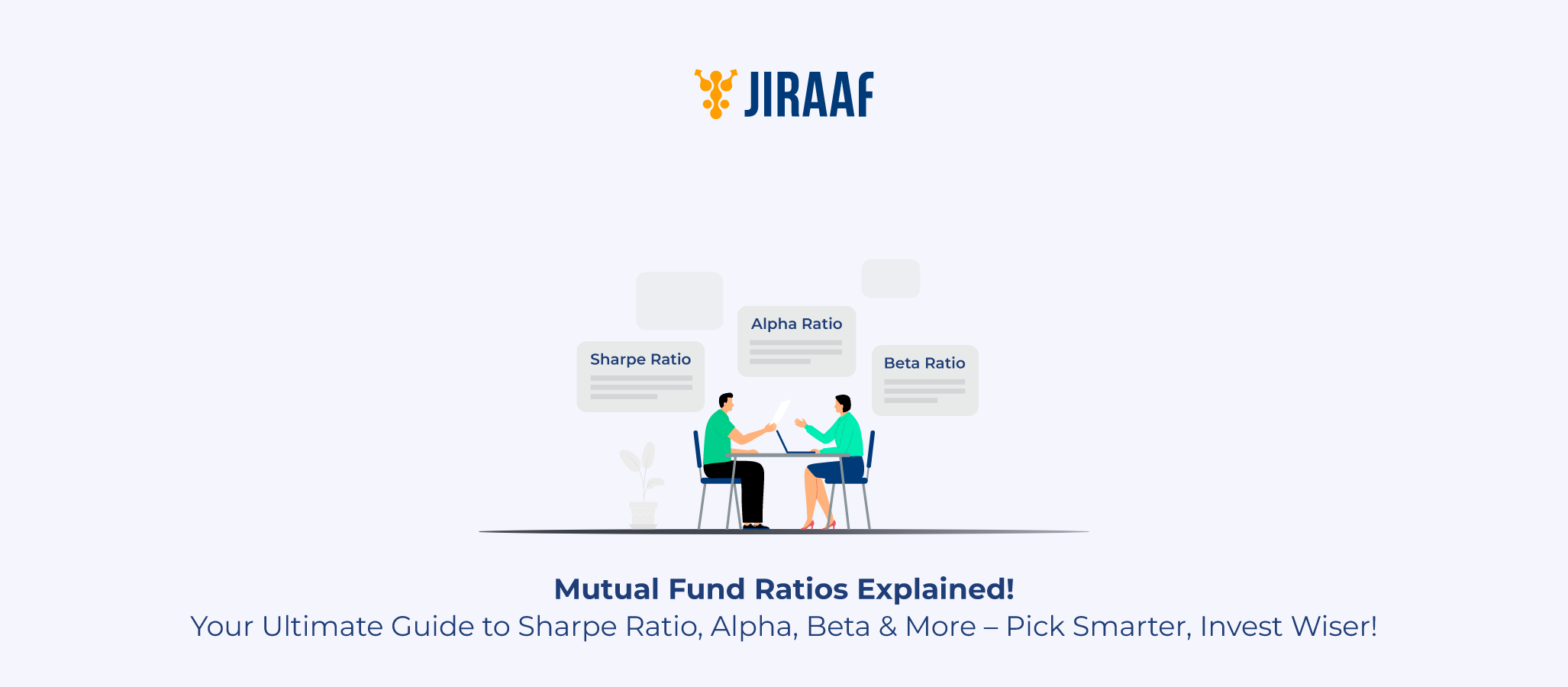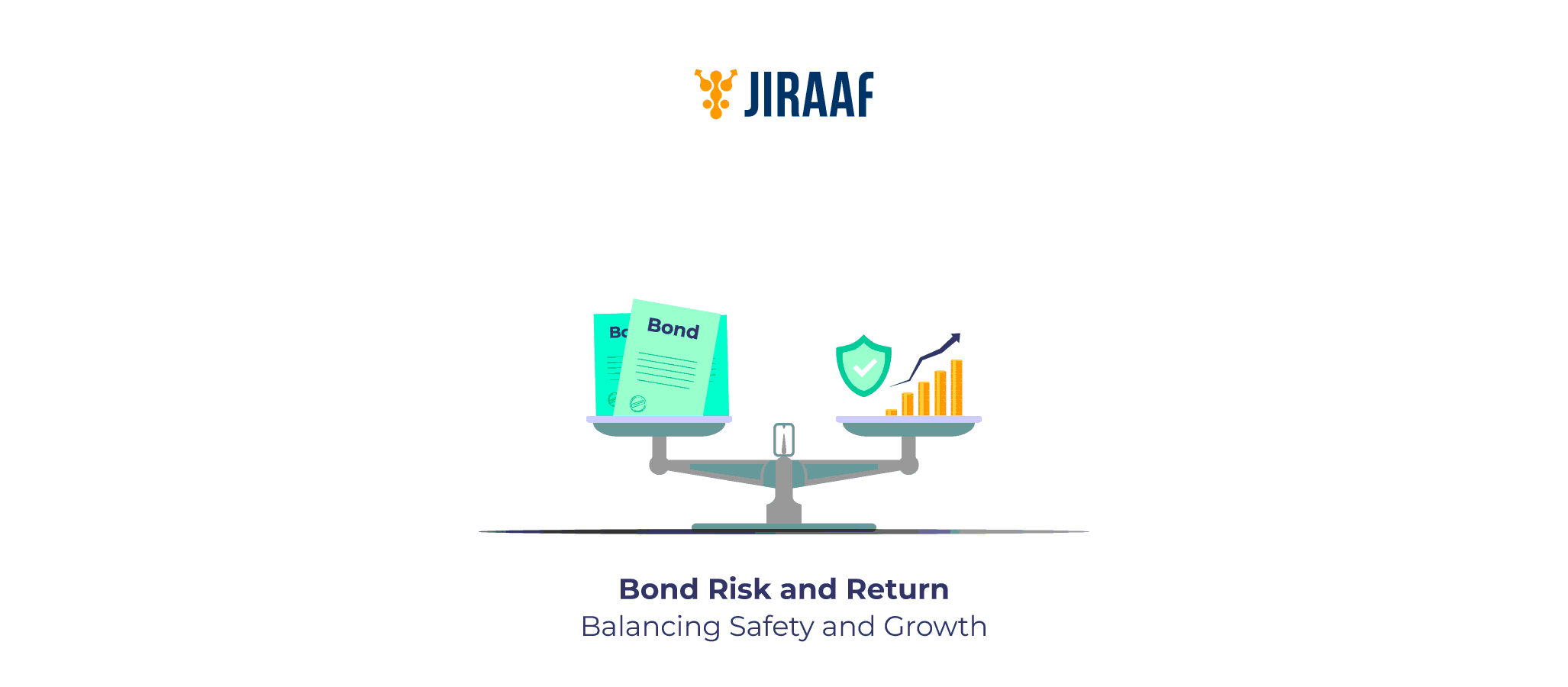It’s wise to assess a mutual fund’s performance based on a few important parameters before making an investment. It will assist you to predict your future returns and assess whether it’s good for you to invest in a particular fund or not. These important ratios could help you in understanding a mutual fund’s performance. Every measure tells a story. However, it’s crucial to understand what this story is. You must try to understand how to examine these metrics altogether and individually as well. It’s critical to understand which statistic to apply to which fund type. We’ll talk about that here.
What are the Mutual Fund Ratios?
Some key indicators that offer deeper insights into a mutual fund’s performance are called mutual fund ratios. These ratios help investors evaluate the fund’s risk, return, volatility, and overall efficiency, beyond just looking at past returns. Consider these ratios as a set of tools for you to assess costs, efficiency, predicted returns, and risks associated. The expense ratio, for example, indicates the portion of your investment that goes towards the fund’s operating expenses; a smaller ratio indicates that more of your money is truly being invested. The Sharpe ratio is another tool that helps you balance the risk you’re taking with the fund’s return.
You will look at the R-squared value if you are looking at how well the fund complies to its benchmark; it goes from 0 to 100, and the closer it is to 100, the more the fund’s movements resemble those of its benchmark. In comparison to that benchmark, the Alpha indicates how much value the fund manager is adding – positive Alpha is excellent. Additionally, keep in mind that Beta indicates how volatile the fund is in the market; if the Beta is greater than one, the fund could swing more aggressively than the market. Knowing these ratios helps you see what you’re actually putting your money into, helping you make more informed, smart investment decisions rather than rash ones.
Important Ratios to Evaluate Mutual Fund Performance
There are broadly five mutual fund ratios that we will evaluate, namely, Alpha, Beta, standard deviation, Sharpe ratio, and Treynor ratio.
Alpha
The Alpha ratio of a mutual fund primarily denotes the measure of its performance or returns relative to a certain benchmark or index. Ideally, it must be positive, which indicates that the mutual fund is performing well in the market. If it is negative, it is said to be underperforming. To spot genuinely competent returns, look for consistently positive Alpha on a mutual fund. To calculate the Alpha ratio, you must evaluate factors like the returns over a certain period, the risk-free returns in the market (G-secs, T-bills, etc.), the Beta, and the returns form the mutual fund’s benchmark. Putting all these together, we can find Alpha using the formula:
Alpha = (Fund return – Risk-free rate) – [Beta × (Market returns – Risk-free rate)]
Determining Alpha before you invest is quite important because it primarily measures the fund managers ability to help generate returns above the benchmark. You can recognize highly skilled professionals that can help decide how to make a fund outperform its benchmark. Consistently achieving a high Alpha ratio can improve the fund’s reputation in the market and generate more capital inflows. While Alpha is an important metric to understand how a mutual fund is performing, depending on the benchmark selected, it may be deceptive in erratic markets, hence, it cannot be considered as is. You need to look at it along with other ratios discussed below.
Beta
The volatility of a fund in relation to its benchmark is known as its Beta. It is a ratio that can help you measure the mutual funds’ systematic risk. The fund might gain more on upward trends and fall more in crashes if its Beta is positive. The reverse is true if the Beta is negative, i.e., the funds’ value moves opposite to the market.
To calculate Beta, we can follow this formula:
Beta = (Covariance of the fund’s returns with the market returns) / Variance of the market returns
While aggressive investors may be willing to put up with higher Beta in exchange for potentially higher gains, conservative investors should opt for a lower Beta. This ratio however changes flexibly over time and becomes irrelevant for non-market-related assets.
Standard Deviation
A mutual fund’s standard deviation is a basic measure of how volatile it is. A fund with high volatility means that it is riskier, and vice versa. You can determine how much a mutual fund’s return can diverge from the scheme’s historical mean return by calculating the fund’s standard deviation.
To calculate a mutual funds standard deviation (SD), we can use the formula:

Where:
- σ = Standard deviation
- Ri = Return in the i’th period
- ˉRˉ = Average return of the fund over n periods
- n = Number of periods
This indicator shows how much the returns on a fund vary over time. While a large standard deviation indicates greater volatility, a low one indicates steady, predictable returns. Funds with a lower standard deviation should be your choice if you are a risk-averse investor. One drawback, however, is that it fails to differentiate between positive (gains) and negative (losses) swings.
Sharpe Ratio
Named after its creator, Nobel Laureate and economist William F. Sharpe, the Sharpe Ratio is a widely used metric to evaluate the risk-adjusted return of an investment. It measures how much excess return an investment generates for each unit of risk taken. The numerator of the ratio is the difference between the investment’s return and a benchmark, typically the risk-free rate, while the denominator is the standard deviation of the investment’s returns, representing its volatility. A higher Sharpe Ratio indicates a more attractive risk-adjusted return, meaning the investor is being rewarded more for each unit of risk assumed.
You can calculate the Sharpe ratio using a simple formula:
Sharpe Ratio= Rp−Rf / σp
Where, ‘Rp’ refers to the returns of portfolio, ‘Rf’ is the risk-free rate and ‘σp’ is the standard deviation of the portfolio’s returns.
This ratio helps in determining whether the returns on a fund justify the risk it comes with. A fund with a higher Sharpe Ratio performs better when the risk is adjusted. When comparing funds with comparable yields, it’s very helpful to choose the one that gives you a higher return per unit of risk. The Sharpe ratio, however, penalizes upward volatility and assumes typical market activity.
Treynor Ratio
The reward-to-volatility ratio, or Treynor ratio, measures the excess returns that a mutual fund provides for every unit of risk, particularly systematic risk, as indicated by the fund’s Beta. It was initially developed by the American economist Jack Treynor and is frequently used to analyze investment portfolios and mutual funds.
It is very similar to the Sharpe Ratio. The only difference is that it utilizes market risk, or Beta, as the denominator rather than standard deviation.
The Treynor ratio formula is as follows:
Treynor Ratio= Rp−Rf/ βp,
Or Average Fund Return – Risk Free Rate of Return / Mutual Fund Beta where Beta = (mutual fund standard deviation / benchmark standard deviation) x R2.
The mutual fund has produced better returns for risk assumed if the Treynor ratio is higher. This indicates that the fund makes returns more efficiently as compared to the systemic risk it takes on. In contrast to comparable funds with greater ratios, a fund with a lower Treynor ratio may not be sufficiently rewarding you for the risk you would have assumed. It is not as helpful for portfolios that aren’t diverse, and it also ignores stock-specific risk.
Why are these ratios important?
These are important ratios that you must consider and evaluate before you make any mutual fund investments because understanding them can help you also understand what you can expect from a mutual fund portfolio. With an ideal set of mutual fund ratios, you would recognize if the mutual funds risk-reward profile aligns with your preferences and your overall financial goals.
Conclusion
Before you invest in a mutual fund scheme, it is essential for you as a diligent and responsible investor to understand how these ratios could impact your mutual fund investment. These ratios, which are often included in the mutual fund scheme document, will assist you in analyzing the scheme’s performance and determining whether or not investing in it will enable you to reach your financial objectives.
FAQs
What is a good alpha ratio in mutual fund investments?
A positive alpha indicates that an investment has outperformed its benchmark on a risk-adjusted basis. Generally, any alpha greater than zero is considered favorable, as it suggests the fund manager has added value beyond market returns. The higher the alpha, the better the performance; an alpha of 1.0 means the investment outperformed its benchmark by 1%, after adjusting for risk.
What is a good Beta ratio in mutual fund investments?
The potential shareholder’s risk tolerance and the difficulties they encounter determine a good Beta ratio. When the Beta is one, the price of the security tends to follow the market; when the Beta exceeds one, the price of the security tends to be more volatile than the market. It is generally less volatile than the market if its Beta is less than one. A Beta of about one or below is usually recommended.
What is a good standard deviation in mutual fund investments?
Although there isn’t such a thing as a good or bad standard deviation, funds with a low standard deviation (between 1 and 10) may be considered volatile. To determine whether a mutual fund is right for you, this can be mapped to your personal risk tolerance.
What is a good Treynor ratio in mutual fund investments?
The Treynor ratio should be compared with other mutual funds, there is no real way to measure it. However, for mutual funds or any other asset class, a Treynor ratio that is higher than 0.5 and closer to 1.0 is regarded as a good Treynor ratio.
What is a good Sharpe ratio in mutual fund investments?
Investors consider a Sharpe ratio of more than 1.0 to be acceptable. The ratio is excellent if it is greater than 2.0 and a ratio of 3.0 or greater is regarded as further exceptional. A ratio that is less than 1.0 is deemed undesirable.
Discover fixed income investments with Jiraaf, a SEBI registered online bonds platform that educates and brings access to a wide array of bonds. Sign up today to explore diversified fixed income investment opportunities to support your goal-based wealth creation journey. Start investing!









